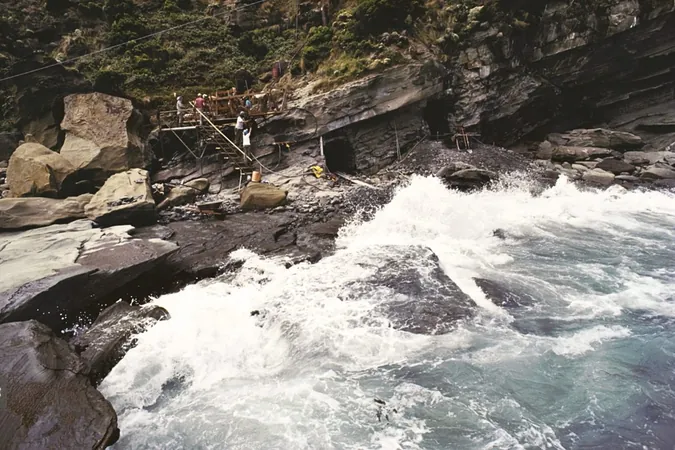
Unveiling the Mystery: Echidnas Evolved from Aquatic Ancestors!
2025-04-28
Author: John Tan
Echidnas have just taken a thrilling turn in the evolutionary tale! Known for their quills and bizarre habit of laying leathery eggs, these creatures seem to have a surprising backstory that may rewrite what we know about their origins.
A Shocking Discovery in Australia's Dinosaur Cove
Recent research has unearthed a revelation: echidnas may have evolved from water-dwelling ancestors rather than the previously believed land-based ones. A study published in the Proceedings of the National Academy of Sciences (PNAS) sheds light on this evolutionary twist.
The spotlight is on Kryoryctes cadburyi, a prehistoric egg-laying mammal that roamed what is now Victoria, Australia, around 108 million years ago. Discovered in the 1990s as a single chocolate-hued upper arm bone—hence the humorous name cadburyi—this fossil holds the key to understanding echidna ancestry.
From Waters to Land: The Adaptation Journey
Using advanced scanning techniques, researchers from the University of New South Wales analyzed the bone's internal structure, revealing a startling resemblance to the platypus rather than to modern echidnas. The study indicates that these early mammals were likely semi-aquatic before making their way onto land, leading to significant adaptations in their bone structure.
While it's fairly common for mammals like whales and seals to transition from land to sea, the reverse is exceedingly rare. Palaeontologist Suzanne Hand, who led the research, emphasizes this significance, stating, "We’re talking about a semiaquatic mammal that gave up the water for a terrestrial existence, and that would be an extremely rare event."
Echidnas: A Bizarre Blend of Traits
Modern echidnas exhibit several peculiar features that hint at their aquatic past. For instance, their backward-turned hind feet resemble those of the platypus and serve as rudders in water, but in echidnas, they're adapted for burrowing. Additionally, they possess a unique diving reflex that aids in breath-holding, and a special version of myoglobin, a respiratory protein linked to aquatic lifestyles.
Just when we thought we had a grip on these extraordinary creatures, the echidna continues to astonish! This discovery not only deepens our understanding of their evolution but also highlights the incredible adaptability of life on Earth.
More to Discover!
As exploration continues, who knows what other secrets ancient bones may reveal about the relationships and adaptations among Earth's most fascinating species?



 Brasil (PT)
Brasil (PT)
 Canada (EN)
Canada (EN)
 Chile (ES)
Chile (ES)
 Česko (CS)
Česko (CS)
 대한민국 (KO)
대한민국 (KO)
 España (ES)
España (ES)
 France (FR)
France (FR)
 Hong Kong (EN)
Hong Kong (EN)
 Italia (IT)
Italia (IT)
 日本 (JA)
日本 (JA)
 Magyarország (HU)
Magyarország (HU)
 Norge (NO)
Norge (NO)
 Polska (PL)
Polska (PL)
 Schweiz (DE)
Schweiz (DE)
 Singapore (EN)
Singapore (EN)
 Sverige (SV)
Sverige (SV)
 Suomi (FI)
Suomi (FI)
 Türkiye (TR)
Türkiye (TR)
 الإمارات العربية المتحدة (AR)
الإمارات العربية المتحدة (AR)